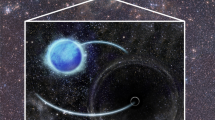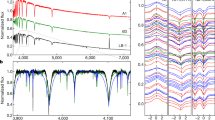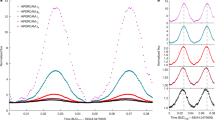Abstract
Gibbons and Hawking1 have suggested that a number of spectroscopic binaries contain black holes. The formation of a black hole in a binary system would be accompanied by a sudden loss of mass from the system, and they believe that this mass loss could convert an initially circular orbit into an appreciably elliptical one. Only masses greater than 1.4 M⊙ can collapse into black holes, and normal double-line spectroscopic binaries cannot contain black holes, so Gibbons and Hawking investigate those single-line spectroscopic binaries listed in the Sixth Catalogue2 for which they estimate that each component has a mass greater than 1.4 M⊙. There are only seven such systems, three of which have orbital eccentricities greater than 0.08. On the other hand, there are 55 double-line systems in which both components are more massive than 1.4 M⊙, and eight of these have orbital eccentricities greater than 0.08. Comparing the relative numbers of eccentric and circular orbits in these two rather small samples, Gibbons and Hawking conclude that there is an excessive number of eccentric orbits among single-line spectroscopic binaries, and that the formation of black holes in some of the systems may have produced this excess. Specifically, they suggest that HD 176318, HD 184035 (201 G Sgr), and HD 194495 may contain black holes.
This is a preview of subscription content, access via your institution
Access options
Subscribe to this journal
Receive 51 print issues and online access
$199.00 per year
only $3.90 per issue
Buy this article
- Purchase on Springer Link
- Instant access to full article PDF
Prices may be subject to local taxes which are calculated during checkout
Similar content being viewed by others
References
Gibbons, G. W., and Hawking, S. W., Nature, 232, 465 (1971).
Batten, A. H., Pub. Dominion Astrophys. obs., 13, 119 (1967).
Buscombe, W. L., and Morris, P. M., Mon. Not. Roy. Astron. Soc., 123, 183 (1961).
Lucy, L. B., and Sweeney, M. A., Astron. J., 76, 544 (1971).
Struve, O., Pub. Astron. Soc. Pacific, 80, 85 (1968).
Savedoff, M. P., Astron. J., 56, 1 (1951).
Batten, A. H., and Ovenden, M. W., Pub. Astron. Soc. Pacific, 80, 85 (1968).
Scott, E. L., in Proc. Second Berkeley Sym. Mathematical Statistics and Probability (edit. by Newman, J.), 417 (University of California Press, 1951).
Moore, J. H., and Neubauer, F. J., Lick Obs. Bull., 20, 1 (1948).
Author information
Authors and Affiliations
Rights and permissions
About this article
Cite this article
BATTEN, A., OLOWIN, R. Black Holes and Binary Stars. Nature 234, 341–342 (1971). https://doi.org/10.1038/234341a0
Received:
Issue Date:
DOI: https://doi.org/10.1038/234341a0
This article is cited by
-
No Evidence for Black Holes in Eccentric Binary Systems
Nature Physical Science (1972)
-
Black Holes and Gravitational Theory
Nature (1972)
-
Physical Sciences: Nature of the Secondary Component of Beta Lyrae
Nature (1972)
Comments
By submitting a comment you agree to abide by our Terms and Community Guidelines. If you find something abusive or that does not comply with our terms or guidelines please flag it as inappropriate.



